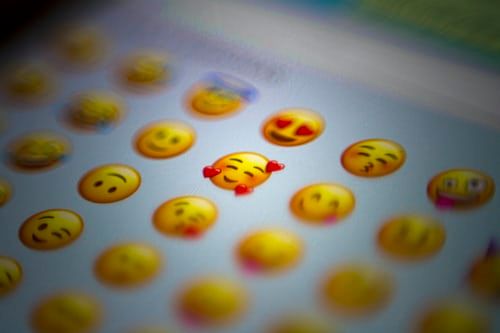World Emoji Day is celebrated on July 17 every year. The main objective of this occasion is to promote the use of emojis – a visual representation of an emotion, object, or symbol – in conversations. The first emoji was created in 1999 by an engineer who worked in a Japanese mobile operating company and there are more than 3521 emojis in the Unicode Standard, Emojipedia said in September 2020.
Also read: As WhatsApp takes down 2 million Indian accounts, users react with memes
Researchers from Adobe (ADBE) surveyed 7000 users across the United States, the United Kingdom, Germany, France, Japan, Australia, and South Korea. They came up with a list of the most confusing emojis.
In 2014, the founder of Emojipedia, Jeremy Burge announced that July 17 will be observed as World Emoji Day. Another reason to celebrate this day on July 17 is that the ‘calendar’ emoji depicts the date as its image.
Also read: Global Emoji report 2021 is out. Find out which emoji is most popular
Adobe on Thursday released the 2021 Global Emoji Trend Report ahead of the World Emoji Day on Saturday.
The Adobe report identified the three most confusing emojis. It said that the ‘eggplant’ (or aubergine) ?, the peach ? and the ‘clown’ ? have confused people the most.
Also read: Facebook to invest $1 billion on content creators using its platforms
Two-thirds of people surveyed believed people who sprinkled a few emojis around on communications were friendlier, funnier or cooler than those that didn’t, preferring to keep messages perfunctory, the report stated. It also added that nine in ten said emojis helped them express themselves better – with a similar proportion saying emojis were a great way of communicating across language barriers.
The most popular of the emojis, as per the report, is the ‘laughing crying’ ? emoji. The ‘thumbs up’ ? – was second and ‘red heart’ ❤️ was the next. The two other emojis on the list are ‘winking kiss’ ? that comes fourth and the ‘sad face with a tear’ ?, which is the fifth.
“I believe we respond more emotionally to imagery, and so, emoji can help the approximate tone of voice, gestures and emotional reactions better with imagery than with words alone. This is the potential strength of emoji: to help us connect more deeply to the feeling behind our messages sent by digital text,” Adobe designer Paul D Hunt said in a blog post on the use of emojis.







